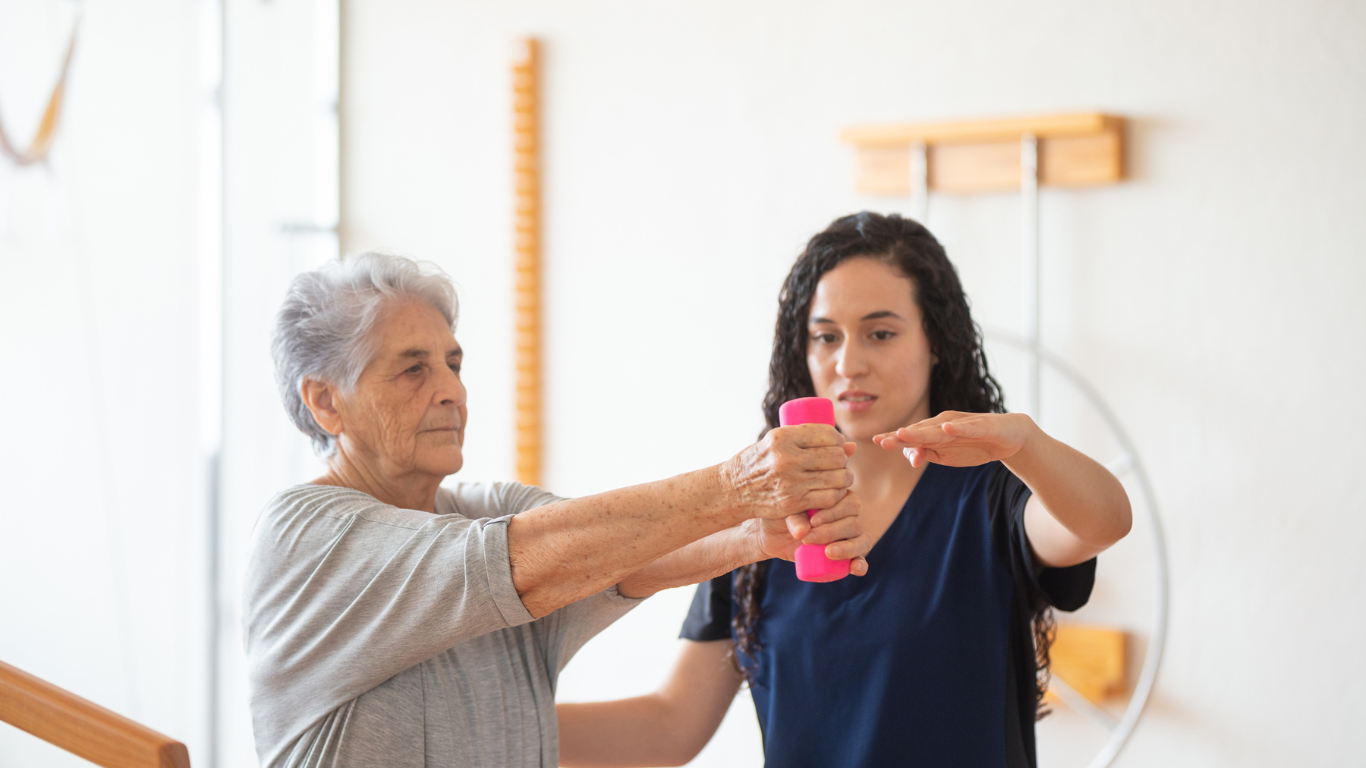Vestibular Therapy for Balance in Seniors: Does It Really Work?

Is Vestibular Rehabilitation Therapy (VRT) effective for seniors, including those with memory conditions? We’re here to help answer your questions and provide an overview of the treatment. At Regency Oaks, we use VRT and other proven techniques to treat dizziness, improve balance and prevent falls.
What Is Vestibular Therapy?
Vestibular Rehabilitation Therapy (VRT) is a specialized, exercise-based treatment designed to reduce vertigo, dizziness, unsteadiness and balance problems caused by inner ear or central nervous system issues. The vestibular system, located in the inner ear, helps us maintain balance and gaze stability during movement. Vestibular loss can occur as we age, leading to symptoms that affect daily life. Vestibular rehabilitation aims to restore normal function, improve symptom management and enhance quality of life.
Conditions Vestibular Rehabilitation Helps Treat
Research shows that several conditions respond well to vestibular rehabilitation. These include age-related balance deficits and Parkinson’s disease, which is often treated with occupational therapy. Patients recovering from stroke or experiencing persistent dizziness after surgery may also find relief through targeted exercises. Essentially, if dizziness or balance problems stem from inner ear or central nervous system impairments, vestibular rehabilitation offers a promising pathway toward improvement or full recovery.
Vestibular Rehabilitation Exercise Examples
Our VRT treatment includes various exercises tailored to each resident’s specific needs and condition. The goal is to promote central nervous system compensation – an adaptive process where the brain adjusts to inner ear dysfunction. Here are some common exercises associated with VRT:
1. Gaze Stabilization Exercises
These focus on improving control of eye movements to maintain clear vision during head movement. For example, you might be asked to focus on a fixed target while moving your head slowly or rapidly from side to side. This helps reduce dizziness during daily activities such as walking or reading.
2. Balance and Postural Exercises
These exercises aim to enhance overall stability and balance. They often start with simple tasks like standing on a firm surface with your eyes open and gradually progress to more challenging activities such as standing on foam or with your eyes closed. An example from the Brain and Spine Foundation involves standing with feet together, then progressing to tandem stance or single-leg stance as tolerated.
3. Habituation Exercises
For individuals with motion-provoked dizziness, habituation exercises are designed to reduce sensitivity. Repetitive exposure to specific movements or positions that provoke symptoms helps the brain adapt over time, decreasing the severity of dizziness.
Step-by-Step Approach to Vestibular Exercises
Initially, these exercises are typically performed under the supervision of a trained therapist to ensure proper technique and safety. The therapy plan may include daily routines – usually 20 to 30 minutes – repeated multiple times a day. Progression is personalized; as symptoms improve, exercises become more challenging to continue stimulating adaptation.
Consistency and Patience Pay Dividends
Since vestibular recovery involves neuroplasticity – the brain’s ability to reorganize itself – consistent exercise makes a significant difference. Our scheduled treatments help patients adhere to their routines, even when progress seems slow. Over weeks or months, these exercises can lead to a substantial reduction in dizziness, improved balance and greater confidence in movement.
Final Thoughts
Vestibular rehabilitation is a comprehensive, individualized approach that leverages the brain’s ability to adapt to inner ear dysfunction. Whether dealing with vertigo, imbalance or dizziness, many patients find relief through tailored exercises that promote recovery. If you experience persistent balance issues or dizziness, consult a health care professional trained in vestibular therapy to develop a suitable plan.With dedication and proper guidance, many individuals regain their stability and confidence in daily life.
At Regency Oaks, we provide personalized care tailored to your needs. Our skilled senior rehabilitation team will ensure you can manage vertigo and other symptoms effectively. To learn more about vestibular therapy or our other rehabilitation programs, contact us today.




